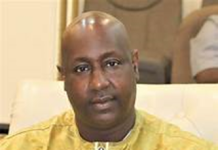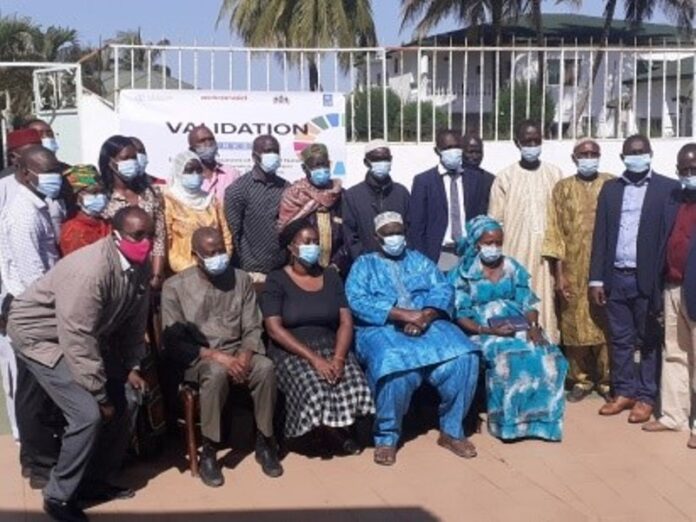with Madiba Singhateh
Welcome to another Edition of the Environment Column and in this edition, we will feature Land, Natural Resource Grievances and how to address them.
In the Gambia, land grievances are becoming day-to-day occurrences and problems as Government strives daily through the Lands Commission, to settle these disputes between individuals and communities.
Recent occurrences of such issues was the land dispute in Niamina, where the neighbouring villages of the two Sambangs (Fula and Mandinka), fought to the teeth, over the same piece of land which either side claim ownership of. A recent occurrence is bulldozing of the country’s only Bamboo Forest land area claimed by one Modou Jammeh, which claim has been refuted by Officials of the Department of Forestry as unfounded.
Because of these and other disputes related to land and land use issues, the UNFAO and AATG,held a validation workshop on Monday 21st December 2020, to find solutions to the unending issues of land disputes in the Gambia.
The program which is funded by the UN Peace Building Fund under the project: ‘Addressing Conflict Over Land and Natural Resources in the Gambia’, will conduct a study on the empirical assessment of land and natural resource grievances across the country. The study covers the three Local Government Administrative Regions of Brikama, Janjanbureh and Kuntaur and will look at the huge pressure on land due to demands from community needs such as farming, livestock grazing, housing, industry and roads, etc.
According to the Chairperson of the Board of Directors of Action Aid The Gambia Ousman Cham, the population of the Gambia at the time of the country’s independence, was about 405,000. But that the population of the country today, stands over 2 million people and yet the land space acquired at the time of independence to date, still remains the same.
According to Cham, it is not surprising that conflicts around land and natural resource exploitation has also increased. He said when land dispute cases rise, the need to come up with solutions that are culturally and socially acceptable and peacefully sustainable, also rises.
According to Cham, it is critical that land issues are resolved with urgency in order to avert those deeply rooted conflicts which have the tendency to wipe out the country’s years of democratic gains.
‘‘We are all aware of the fact that those who depend on agriculture and its related activities, constitute over 70% of the total population of the country. For such people, natural resources especially land, form the bedrock of their livelihoods,’’ Cham said.
Further speaking on the factors related to addressing land issues, Cham said the inadequate mapping of land to ensure that their availability is protected from illegal land grabbers, has resulted in frequent conflict between individuals, communities and the State.
He said increase in the purchase of large areas of land by individuals and the private sector including Estate Agents, has led to scarcity of farm lands especially for small holder farmers, particularly in the West Coast Region (WCR). This he said has led to an increase in the number of landless people who largely depend on farming for their survival.
Mr. Cham said these factors and many more, are recipes for violent conflict and puts increasing pressure on Government and its relevant Departments, to effectively administer land issues in the country; That it is clear that land grabbing by the wealthy few at the detriment of local communities especially in the WCR, makes it urgent for the authorities to develop the regulatory framework and policies for small farmers, to enable them feed their families.
Dr. Mustapha Ceesay, the Head of Programs at the UNFAO and Assistant Country Representative for the World body, said the Gambia being a farming community has much of its territory devoted to crop production, livestock farming, fisheries and natural resource exploitation, and will naturally experience conflicts over land and natural resource issues, due to the rapid increase in the country’s population, compared to its land size. He said such conflicts are mainly disagreements and disputes over access, control and use of land and natural resources. That these conflicts often emerge because people or communities have different uses for the country’s natural resources such as forest products, water bodies and pastoral lands. He said disagreements also arise when the interests and needs of specific groups of people are not compatible to that of others, or when the priorities of some user groups are not considered in policies, programs and development projects.
Ceesay said the United Nations Secretary-General’s Peace Building Fund is an instrument for conflict resolution. That the initiative calls for greater national leadership and a shift from response to land conflicts, to prevention.
‘‘Between 2010 and now, the UN has invested more than 800 million Dollars globally in conflict resolution over land and natural resources.
Conflict prevention is therefore more cost-effective and warrants more investment and scaling-up. This is in line with global SDG targets, the NDP and the national SDG priorities of the Gambia,’’ he said. That the FAO being the UN Agency mandated with agriculture, livestock, fisheries and natural resource management, has been commissioned by the UN Secretary-General’s Peace Building Fund, to lead efforts in conflict resolution over land and natural resources.
He concluded that the study has done some Situational Analysis of LNR in The Gambia by looking at issues related to Land, Forestry and Fisheries.
‘‘It looks at conflict resolution mechanisms, gender equality in conflict resolution mechanisms and with the recognition of customary land rights and informal land tenure systems,’’ Ceesay concludes.
The program was chaired by the AATG Director, Dr. Ousman Badgie.



















